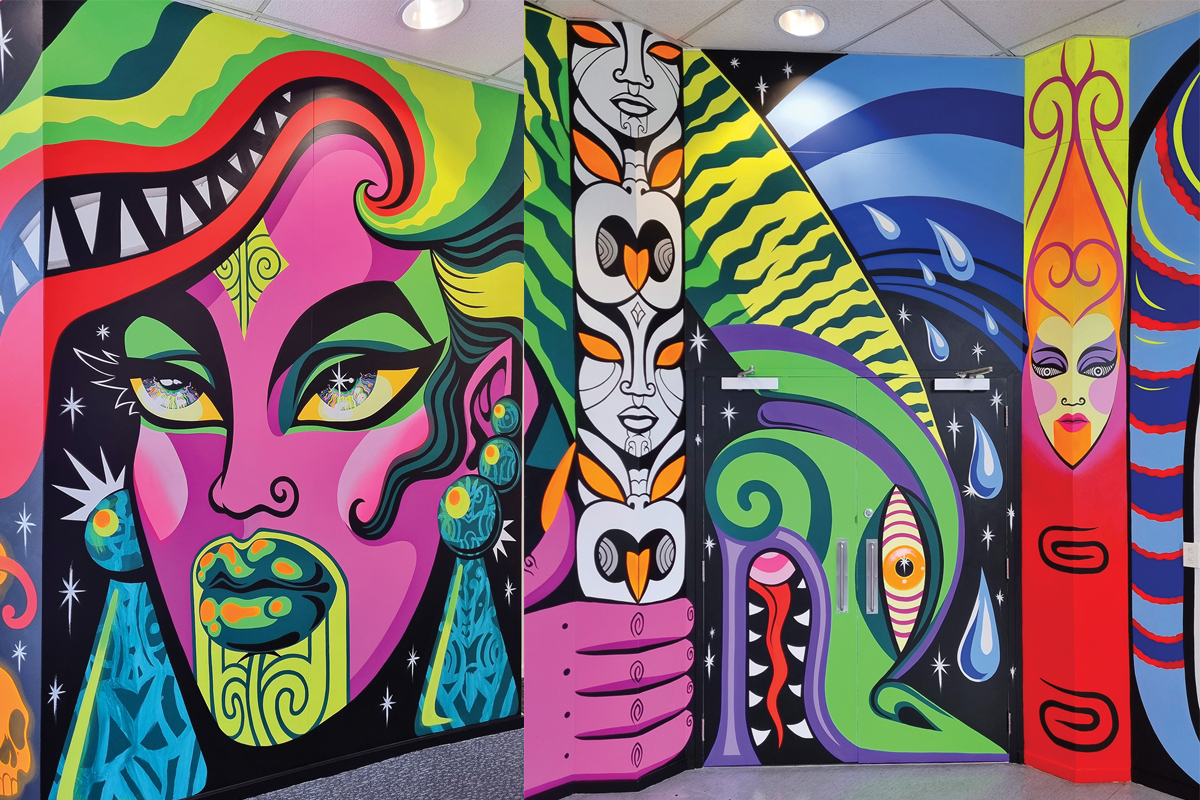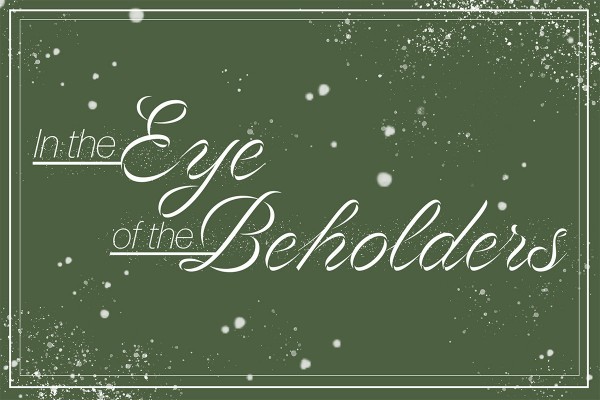Every week, we send two writers to an art exhibit in Ōtepoti Dunedin. One of them will choose a specific piece, and describe it to the other without them looking. They’ll try to figure out what the piece actually is before diving into their thoughts on the entire exhibition. You can’t ascribe any one meaning to any one piece of art, so this functions a bit like a game of artistic telephone. Let’s dive in.
This Week: Bloodline
Maddie: We’re looking at something that is massive in scale, it really demands attention within the space. It is vibrant in colour and energy. It depicts a range of iconography of cultural and spiritual significance. The work is narrative in nature. Several figures are present within the piece, some depicted more literally while others are more symbolic.
Esmond: I’m going to guess that we’re looking at some sort of religious art from the collection. Maybe a history painting or tableau? Maybe an icon painting?
The answer: We’re looking at Xoë Hall’s mural, Bloodline: a large-scale installation work in the form of acrylic murals, that envelopes the rear entrance of the Dunedin Public Art Gallery. Originally part of Paemanu: Tauraka Toi – A Landing Place, Hall’s mural took us on a trip through the cosmos. Here’s what we discovered among the stars.
 In the aptly named Bloodline, Xoë Hall (Kāi Tahu) honours the atua (deity, ancestor) of her iwi and their stories, although with a distinctly modern style. It’s an electric shock to the eye, immediate and vibrant in colour, imbued with the creative energy of the atua it depicts. While the cosmology of this mural may be traditional, a word associated with the past rather than the present, its figures shake off these static expectations with a shrug of their neon shoulders.
In the aptly named Bloodline, Xoë Hall (Kāi Tahu) honours the atua (deity, ancestor) of her iwi and their stories, although with a distinctly modern style. It’s an electric shock to the eye, immediate and vibrant in colour, imbued with the creative energy of the atua it depicts. While the cosmology of this mural may be traditional, a word associated with the past rather than the present, its figures shake off these static expectations with a shrug of their neon shoulders.
Hall’s work incorporates the physical features of the gallery space itself into the stories, enveloping the kaimātakitaki (spectator) into her world. A pillar becomes a poū erected by the children of Rakinui and Papatūānuku, holding their parents apart. Grasping it at her side, Papa attempts to remove it so that she may be reunited with her lover. A beam across the corridor becomes Papa's other (bubblegum pink!) arm, complete with perfect manicure, reaching up longingly towards Raki. The striking blacked-out sections of walls become a representation of Te Pō, the perpetual night. From this darkness, Rakinui’s smouldering eyes gaze out across the gallery at his separated lover. As a kaimātakitaki, the space you stand in is Te Ao Mārama, the world of life and light, while the walls become the divine couple, forever apart.
The entrance to the wharepaku becomes the watery mouth of Takaroa, perhaps agape in shock at discovering that his wife Papatūānuku had found a new lover in Raki. Aoraki, mauka of Kāi Tahu, can be spotted alongside his brothers. Their curling tongues point towards the heavens as if still reciting the karakia they hoped would return them home. However, a mistake in their karakia would seal their fate in stone (literally). Their waka struck a rock and capsized, becoming the Te Waipounamu, the South Island, and the brothers the mountains. Other atua including Mahuika, Pounamu, and Māui (of course), are also present within the piece. Attempting to gain immortality, Māui shoots his shot by trying to crawl inside Hine-nui-te-pō, atua and guardian of night, death, and the underworld. Catch a glimpse of his lizard form, crushed between the obsidian teeth in her vagina. Ouch.
Bloodline will take you to a primordial, starry place of creation, but it also feels like eating Fruit Loops in your living room in 2009. And yet somehow, it also feels like now - right now, the only moment when everything, any act of creation, is possible.
Recommended song for your visit: All the Stars by Kendrick Lamar & SZA
This column is sponsored by DPAG, but they have no influence on the reviews
Xoë Hall Bloodline 2022. Acrylic paint. Installation detail, Dunedin Public Art Gallery.



